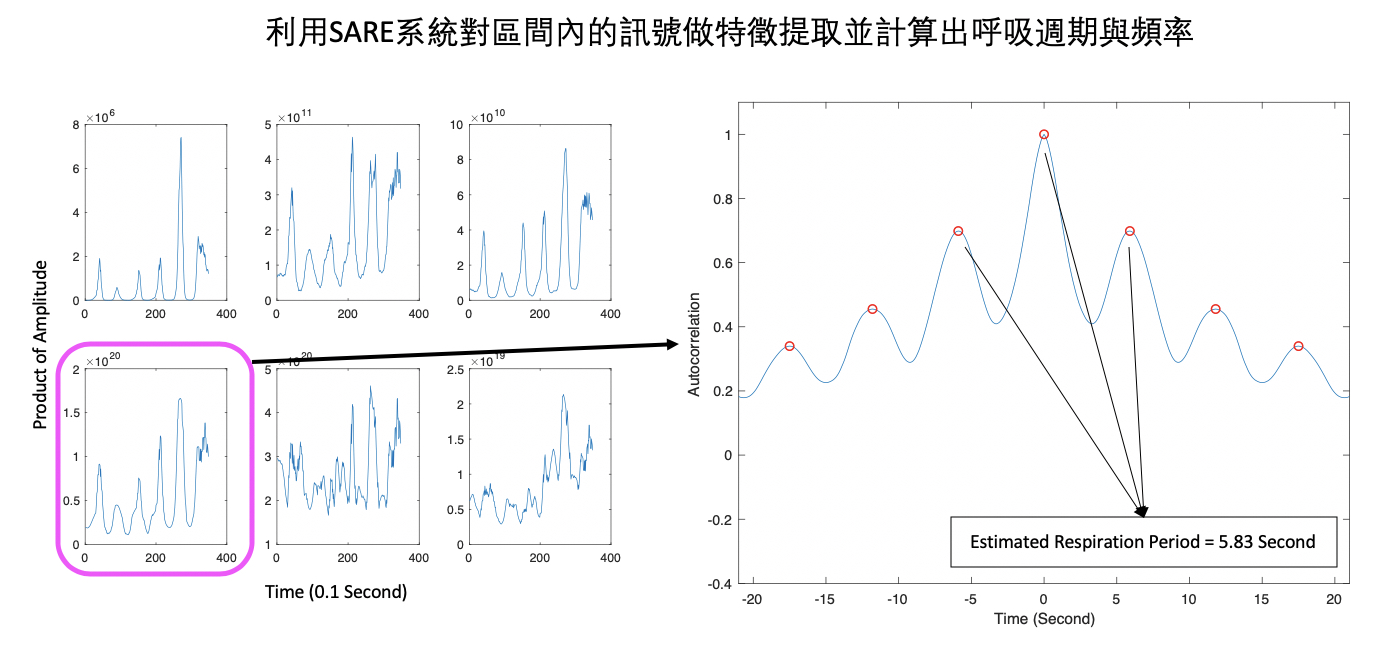| Technical Name | SARE: Self-Adaptive Respiratory Rate Estimation for Device-Free CSI-based Wi-Fi Systems | ||
|---|---|---|---|
| Project Operator | National Chiao Tung University | ||
| Project Host | 方凱田 | ||
| Summary | Respiratory rate is considered one of the important indicators to reveal human health and sleep quality. Conventional respiratory rate detection requires the user to equipped with wearable or handheld devices which are cumbersome and infeasible for long-term usages. Radar has been developed as a device-free solution for respiratory detection in recent years; however, high price issue prevents it from being generally adopted. With abundant channel state information (CSI) from Wi-Fi signals, we can detect the chest fluctuations generated by a human body by proposing the self-adaptive respiratory rate estimation (SARE) for device-free CSI-based Wi-Fi systems. The main features of proposed SARE system include self-adaptive anti-interference technique, slight turbulence and frequency detection, and multi-antenna spatial detection. Without the pre-trained data and models, our proposed SARE system can provide precise respiratory rate detection such as to predict the occurrence of sleep apnea. |
||
| Scientific Breakthrough | Without requiring to equip with wearable devices, we proposed a self-adaptive respiratory rate estimation (SARE) for Wi-Fi systems. The key features of SARE system include self-adaptive anti-interference technique, slight turbulence and frequency detection, and multi-antenna spatial detection. By adopting signal processing techniques, it is not required for the SARE system to collect pre-trained data for the construction of feature models. The self-adoption feature can rapidly adjust the signal pattern in a short time period to calculate the human's respiratory rate. We process the channel state information (CSI) of Wi-Fi signals to offer centimeter-level estimation accuracy; whereas multiple antennas of Wi-Fi devices provide the spatial diversity for turn over detection of human body. |
||
| Industrial Applicability | We proposed a self-adaptive respiratory rate estimation (SARE) for device-free CSI-based Wi-Fi systems. Through the device-free and adaptive features, the SARE system can be easily and painlessly implemented in a household, helping individuals to monitor their own sleep breathing quality via the commercially available Wi-Fi routers and devices. |
||
| Keyword | Respiratory Rate Detection Wi-Fi Channel State Information (CSI) Device-Free Human Turn Over Detection Sleep Apnea Self-Adaptive Anti-Interference Technique Slight Turbulence and Frequency Detection Multi-Antenna Spatial Detection Real-Time Prototyping Wi-Fi Systems | ||
- ktfeng@mail.nctu.edu.tw
other people also saw







